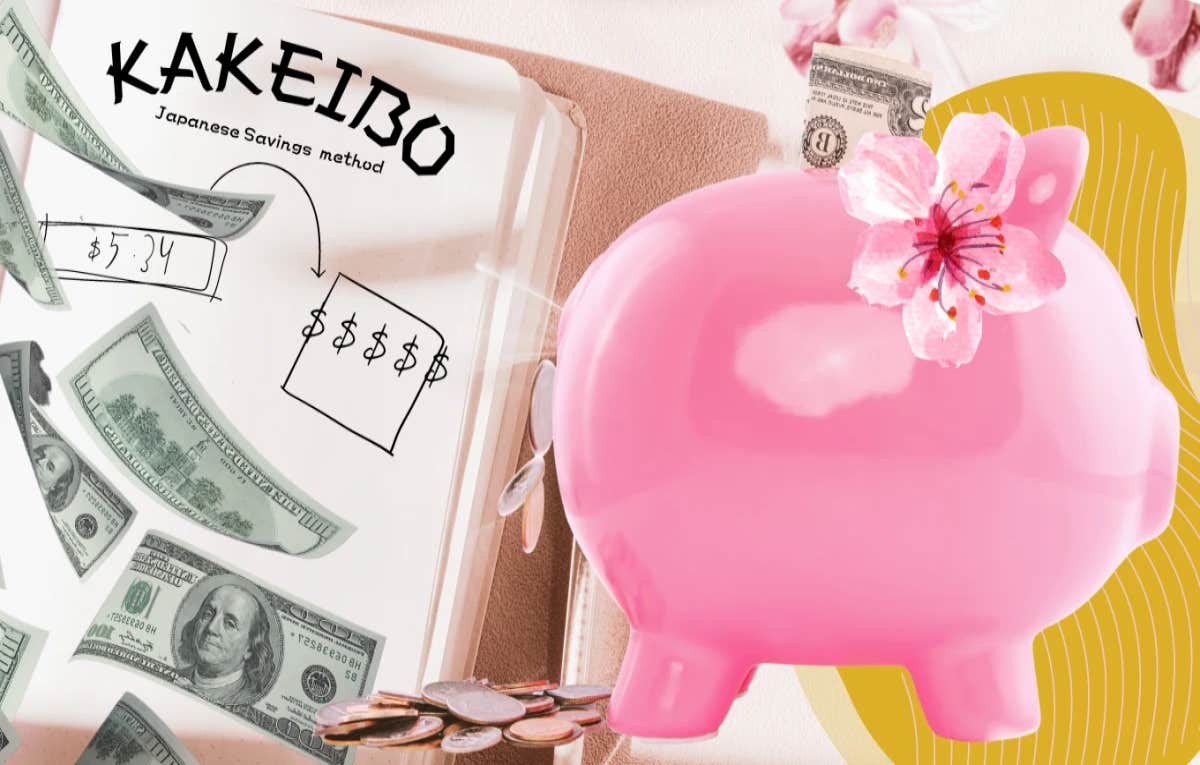How The '$5.34 Rule' Can Help You Save Over 20% Of Your Income Using Just A Pen And Paper
The '$5.34 Rule' and the Kakeibo method are great ways to stay present when you're making a purchase.
 DAPA Images, pick-uppath, ZM via Canva
DAPA Images, pick-uppath, ZM via Canva In this economy, it feels like we’re constantly scrounging for pennies to save as the prices for everyday needs continue to rise. The cost of living in the United States continues to rise as wages stagnate, making it feel almost impossible to save any money.
But an ancient Japanese tradition that recently crossed into Western culture may be a solution to that problem. The tradition dates back over 100 years to 1904 and provides a brand new way of thinking about budgeting that isn’t normally considered in today’s day and age.
The ‘$5.34 rule’ and the Japanese Kakeibo method can help you save money in new ways.
The $5.34 rule doesn’t explicitly state that you should try setting aside five dollars and thirty-four cents daily or weekly in order for it to add up as savings — it’s more about the mindset that small, inconsequential savings will eventually mean a lot in the grand scheme of things.
Similarly, the Kakeibo method focuses on making the spender slow down and make spending decisions presently. The Kakeibo method will allow you to place more thought before purchasing anything and encourages you to keep track of it all.
Kakeibo translates to “household financial ledger.” A ledger is a physical book that tracks all financial accounts — income, expenses, savings, and all of the intricacies and nuances that come with all three of those forms of cash flow.
Instead of downloading a budgeting app or opening a new spreadsheet, Kakeibo asks you to grab a pen and paper and start writing everything down.
What is your monthly or weekly income? Where is it all going? Simply keep track of what’s coming in and what’s coming out before trying to do any budgeting.
Once you’ve done that, you can have a better idea of the money you have left over before your next paycheck comes in. When you have a better idea of your finances, you are better able to plan out what you’re going to save and employ the “$5.34 rule.”
The $5.34 rule and the Kakeibo method ask you to treat saving as a precursor.
Save first, spend later — that’s the name of the game. If you start treating money saved as a fixed expense — like the $5.34 rule — then you’ll be more likely to think about the way you spend your money after everything is said and done.
Treating savings as a necessity will lessen the amount of available money you have to spend, which will allow you to ask yourself key questions that Kakeibo wants you to answer:
- Do you truly need to buy this?
- Is it within your financial means?
- When are you going to use it?
- What is your emotional state?
- How will you feel once you’ve made the purchase and for how long?
Kakeibo is rooted in mindfulness, and although it’s a great way to keep everything organized and at the forefront of your mind, it also allows you to seek out ways for improvement.
Writing everything down allows you to get a simpler look at where your money is going, which means you’ll be able to determine the areas in which you may be spending too much. If you start out by saving a small amount and eventually declutter enough that your available money increases, you should increase your savings target in order to grow your wealth.
Isaac Serna-Diez is an Assistant Editor for YourTango who focuses on entertainment and news, social justice, and politics.
